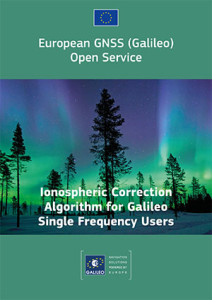The GSA has published a new document on the NeQuick Ionospheric Model, used to compensate ionospheric errors on Galileo and other GNSS signals. The document is titled “European GNSS (Galileo) Open Service Ionospheric Correction Algorithm for Galileo Single Frequency Users”.
The ionosphere is a dispersive medium for radio signals, so by making measurements simultaneously on two frequencies transmitted by a satellite, most of the effect of the ionosphere can be removed. However, single-frequency devices such as most vehicle navigation and handheld receivers don’t have the luxury of dual-frequency correction. These devices must rely on a single-frequency correction model. The coefficients for such a model are included in the navigation messages transmitted by Galileo satellites.
This model is a result of years of intensive research efforts to improve the modelling solutions used for classical telecommunication services. The algorithms defined in this model can be built into receiver equipment such as in-car navigation systems to enable them to reach extremely high levels of accuracy globally when using single frequency services, even during the peaks solar activity during the periodic 11-year solar cycle when signals are subject to the most interference.
Extensive testing has confirmed the quality of the model which has recently been recommended at international level for broader adoption by other constellation providers around the world.
Download here the document.

